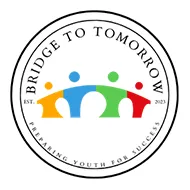Success in learning often starts with a feeling of safety. If a student knows what to expect in their environment and daily routines, they are far more likely to feel confident in exploring challenges and developing new skills. For teachers and parents alike, creating predictable structures can transform not just a classroom, but a child’s academic growth and emotional well-being.
When we talk about predictability, we’re referring to routines, clear expectations, and consistent patterns in a child’s environment. These essential tools can have an outsized impact on students, particularly those who crave clarity to thrive. Predictability is often undervalued, yet it plays a profound role in reducing anxiety and helping students of all needs feel empowered.
Here’s how structure and predictability pave the way for success and how initiatives like the MindMeld Aspire program offered by Bridge to Tomorrow amplify these benefits in classrooms.

Why Predictable Structures Are Vital for Students
- Reduces Anxiety
Think of predictability as providing a mental roadmap for students. Knowing what to expect minimizes the uncertainties that can make kids feel anxious or distracted. For students who struggle with cognitive or behavioral challenges, predictable routines offer a calming anchor in their day.
- Encourages Independence
When routines are clearly established, students know what to do without constant guidance. This builds autonomy, allowing them to take ownership of tasks and decisions over time, which fosters independence and intrinsic motivation.
- Builds Emotional Security
Familiarity in routines assures students that their environment is safe and reliable. This emotional security gives them the confidence to engage more fully in academics and relationships with peers.
- Enhances Focus
By minimizing unnecessary variables, consistency allows students to redirect their energy to learning. This sense of focus creates more opportunities for sustained progress.
- Supports Neurodiverse Learners
Predictability is especially powerful for children with autism, ADHD, or other cognitive differences. These students thrive in settings where routines, visual schedules, and clear expectations guide them toward success.
Tools for Establishing Predictability
Predictability doesn’t have to translate to rigidity. It’s about finding the right balance of structure and flexibility that allows students to feel secure while also fostering growth. Here are some simple ways to create structure in a classroom or home setting:
- Routines: Start and end each day with consistent routines, such as morning check-ins or closing reflections. This sets the tone for productivity and stability.
- Visual Schedules: Use charts, whiteboards, or apps to visually display daily and weekly plans. For neurodiverse learners, visual schedules are invaluable for absorbing expectations at their own pace.
- Consistent Language: Use the same phrases for directions or transitions regularly. For example, saying “Today we will ___” before every lesson builds familiarity with what’s to come.
- Clear Rules: Post and review classroom or house rules frequently. Keep the language short, straightforward, and accessible for all developmental levels.
- Transitions with Warnings: Give students advanced notices for changes in activities to help them mentally prepare for what’s next. A simple, “Five minutes until cleanup,” goes a long way.

The Role of Predictability in Academic Excellence
Structured environments set the stage for deeper learning. For example:
- Math Lessons: If students know that every lesson begins with practice problems followed by hands-on activities, they can channel their focus into the content instead of trying to decode the process.
- Reading Circles: A simple routine like discussing story predictions before reading ensures every child, regardless of ability, knows how to participate meaningfully.
- Collaborative Projects: Break these into clear, predictable tasks with milestones the entire group can follow.
When done well, structure feels empowering—not controlling—to students. It is within the boundaries of predictability that creativity, problem solving, and self-expression can flourish.
How MindMeld Aspire Supports Predictability
This is where programs like MindMeld Aspire, offered by Bridge to Tomorrow, shine. The MindMeld training is designed for educators and caregivers who want to create structured, inclusive environments where students thrive.
MindMeld Aspire provides a comprehensive approach to ensuring consistency in the classroom, especially for neurodivergent students. Here’s what the program offers:
- Core Knowledge for Building Predictable Routines: Educators learn how to establish effective classroom management anchored in clear routines, expectations, and positive reinforcement.
- Data-Driven Methods: Harness the power of applied behavior analysis (ABA) to teach students with varying needs.
- Tailored Strategies for Visual Scheduling: Helping neurodiverse learners stay engaged and feel secure in the learning process.
- Tools for Managing Behavioral Challenges: Teachers acquire actionable insights into creating calm and structured learning spaces.
The program’s multi-level approach ensures that participants build on foundational skills to implement advanced techniques like precision teaching and behavior management.
To learn more about how MindMeld Aspire transforms classrooms, visit MindMeld Aspire Classroom Management Training.
Building Community Around Predictable Practices
It’s not just about the structures we build for students. It’s also about how we connect with others to create environments of shared trust. At Bridge to Tomorrow and through initiatives like MindMeld, we are building communities of caregivers and educators who champion predictability as a path to greater student success.
This sense of community is perhaps one of the most undervalued aspects of predictability. When students feel that they’re part of a network of caring adults and peers who share the same vision for their success, confidence grows exponentially.
Call to Action
Are you looking to create a stable, structured, and supportive environment for students? Whether you’re a teacher, parent, or caregiver, MindMeld Aspire can equip you with the tools, strategies, and insights you need to build confidence and foster excellence in every child.
Discover the power of predictability and learn how structure can transform your classroom. Visit MindMeld Aspire to get started today.
External Links
- MindMeld Aspire Classroom Management Training
- Bridge to Tomorrow’s Full Training Programs
- Autism Scholarships and More
Equip yourself. Empower your students. Together, we build bright tomorrows.



